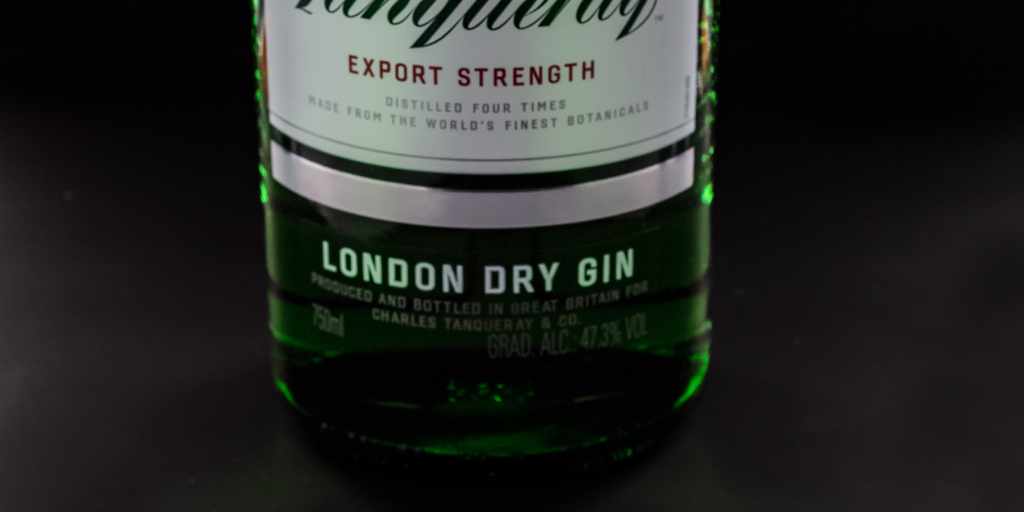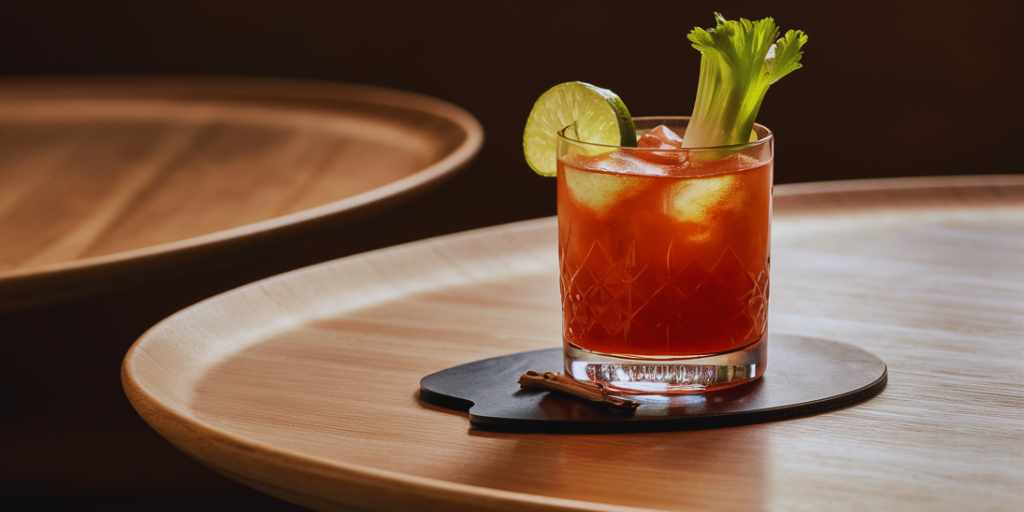To truly appreciate the diverse world of spirits, it’s crucial to understand its various offerings, like rail gin, which may seem like an enigma to many. This article will serve as a guide, providing in-depth knowledge about “what is considered rail gin”.
Key Takeaways
- Rail gin is a common gin used in mixed drinks due to its affordability and easy access for bartenders.
- Despite its lower cost, rail gin brings its unique flavours to many classic cocktails, like the gin and tonic or Tom Collins.
- The name “rail gin” comes from its typical location on the speed rail or well within a bartender’s easy reach.
- While some consumers prefer premium gins for their nuanced flavours, rail gin remains popular, especially in high-volume bars and restaurants.
Understanding Gin: A Brief Overview
What is Gin?
Often regarded as the backbone of numerous classic cocktails, gin is an alcoholic beverage that has carved its niche in the vast world of spirits. It is a distilled liquor known for its crisp flavor, predominantly derived from juniper berries. But what makes gin truly unique is the addition of other botanicals that each manufacturer uses to craft their unique blend.
In essence, gin is made by distilling a fermented grain mash — similar to how whiskey is produced. The grains used can vary, from corn, barley, wheat, to rye. The resultant neutral spirit is then redistilled with the juniper berries and other botanicals, which can range from citrus peels, coriander seeds, angelica root, orris root, and many more, depending on the specific brand’s recipe.
History of Gin
Gin’s roots can be traced back to the Middle Ages, where it was initially used as an herbal medicine. The spirit we now know as gin was first developed in the 17th century in Holland. Back then, it was sold in pharmacies to treat ailments like gout, gallstones, and stomach complaints. In fact, the term ‘gin’ is derived from the older English word ‘Geneva,’ which itself comes from the French ‘genièvre’ and the Dutch ‘jenever,’ all of which mean ‘juniper.’
Gin gained significant popularity in Britain in the mid-17th century during the period known as the “Gin Craze.” The government allowed unlicensed gin production, which led to a period of heavy gin consumption. The spirit was available at a low cost and thus became the drink of choice for many.
Over time, gin has evolved from a herbal medicine into an object of commerce among spirits, often consumed in cocktails. It has gained a significant place in the culture of many countries, and today, it is produced worldwide, with various styles and flavors on offer.
Types of Gin
Gin is a versatile spirit that comes in many varieties, each distinguished by the method of production, the ingredients used, and the geographic location of the distillery. Here are some of the key types:
- London Dry Gin: Despite its name, it doesn’t need to be made in London. This type is known for its strong juniper flavor, dry character, and minimal sugar content.
- Old Tom Gin: This gin style is sweeter than London Dry but drier than the Dutch Jenever. It’s often used in classic cocktail recipes that call for a balanced, slightly sweet gin.
- Plymouth Gin: Plymouth Gin is a geographically protected style, meaning it can only be made in Plymouth, England. It’s drier than Old Tom but fruitier and less botanical than London Dry.
- Navy Strength Gin: As the name implies, this gin is robust — it usually boasts an alcohol content of 57% or higher. Its name comes from the British Royal Navy, who consumed it because even if it spilt on gunpowder, the gunpowder would still ignite.
- Genever or Jenever: This is a Dutch style of gin, sweeter and maltier than the styles we’re familiar with because of the presence of malt wine in the base.
Of course, there is also rail gin—a type of gin typically used in high-volume settings like bars and nightclubs because of its affordability and easy access for bartenders, which we will explore more in this article.
What Gins Do Bars Use for Rail Drinks?
When researching this article, we found that these brands of gin were popular choices for well drinks:
- Aviation Gin
- Barton Gin
- Beefeater
- Bombay Sapphire
- Broker’s London Dry Gin
- Fords Gin
- Haymans Old Tom Gin
- Sipsmith London Dry
- Tanqueray
Unravelling the Mysteries of Rail Gin
What is Rail Gin?
Rail gin is the term given to a specific type of gin commonly found in many bars and nightclubs worldwide. The term “rail” often is associated with the lowest cost, and sometimes lower quality, liquors in a bar’s inventory. These spirits are named “rail” because they are typically located on the speed rail or rack within easy reach of a bartender, allowing for quick and efficient service during busy times.
In essence, rail gin isn’t a specific brand or type of gin, but instead, it refers to any gin that the establishment has chosen to be their standard, go-to option for mixed drinks. Rail gins are often used in high-volume mixed drinks and classic cocktails that don’t specify a certain gin brand.
Why is it Called Rail Gin?
The terminology originates from the physical setup of many bars. These establishments often have a “rail” or “speed rack” – a conveniently placed shelf or rack where the most commonly used spirits are stored for easy access. This arrangement ensures that the bartender can quickly reach for these bottles when preparing mixed drinks, especially during peak business hours. Hence, the liquors placed within this easy reach – usually the house brands or less expensive options – became known as “rail” liquors.
The rail typically includes vodka, gin, rum, tequila, rye whiskey, and triple sec, among others. The specific brands may vary from bar to bar, depending on factors like the establishment’s clientele, location, and profit margin considerations.
How is Rail Gin Used?
Rail gin is the staple of a myriad of cocktails, including the refreshing gin and tonic, the classic Tom Collins, and even the complex Long Island iced tea. These are just a few examples of the most common rail drinks typically made using rail gin.
Because it’s a cost-effective option, rail gin is typically used in any gin-based cocktail unless a customer specifically requests a premium or top-shelf gin. So, if you order a gin and tonic without specifying the gin brand, you’ll likely get your drink made with the rail gin. On the other hand, if you order a gin and tonic with a specific brand, it becomes a “call drink,” and the bartender will use the brand you called for.
Quality and Taste of Rail Gin
The quality of rail gin, like any spirit, can vary significantly. While some might associate rail drinks with a lower-quality spirit due to the lower cost, this isn’t always the case. Many rail gins can still deliver a flavorful and satisfying drink. The most important thing to note is that while rail gins may not have the complexity and depth of their premium counterparts, they often excel as a cocktail mixer.
Like all gins, the taste of rail gin is primarily characterized by a juniper flavour. However, because different brands use different combinations of botanicals, each rail gin can have a unique flavour profile. Some may have more citrus notes, while others may have more herbal or floral notes.
Recognizing Rail Gin Brands
While there is no hard and fast rule for what brands can be considered rail gins, as it ultimately depends on the bar and its inventory, there are a few names that you will often find on the rail in many bars. Brands like Gordon’s, Seagram’s, and Gilbey’s are often used as rail gins due to their affordability and wide availability. However, it’s worth noting that what one bar may have as their rail gin, another bar may consider a call or even a premium gin. So, it’s always a good idea to ask if you’re unsure.
Production Process of Rail Gin
Ingredients of Rail Gin
What goes into rail gin? Let’s explore the base ingredients that contribute to its distinctive flavour. In addition to the essential juniper berries, rail gin often includes a variety of botanicals and spices that add complexity and character to this staple spirit.
Distillation Process
The creation of rail gin, much like other spirits, involves a specific distillation process. After the fermentation of the grain mash, the liquid is distilled, and the botanicals are added. The result is a spirit with a stronger alcoholic content, typically diluted before being bottled.
Uses of Rail Gin in Cocktails
Popular Cocktails with Rail Gin
Despite its lower price point, rail gin can be the star ingredient in numerous cocktails, proving its versatility in the mixology world. Some common rail drinks made with rail gin include the gin and tonic, Tom Collins, and even the Moscow Mule.
Recipes of Classic Rail Gin Cocktails
Now that we’ve familiarized ourselves with the cocktails that use rail gin let’s walk through some recipes for you to try at home. For instance, to make a classic gin and tonic, combine your rail gin, tonic water, and lime juice in a glass, add ice, garnish with a lime wedge, and voila, you have a refreshing drink to enjoy.
The Place of Rail Gin in Today’s Spirit Market
Consumer Perception of Rail Gin
The perception of rail gin varies among consumers. Some view it as a budget-friendly option perfect for creating mixed drinks during happy hour, while others see it as a lesser substitute for premium gins when it comes to sipping and enjoying the gin’s nuanced flavours.
Market Trends Involving Rail Gin
It’s interesting to see how market trends have influenced and been influenced by rail gin’s standing in the spirit industry. While the demand for top-shelf liquors has seen a surge, rail gin continues to hold its ground, especially in high-volume establishments where cost and quick service are key considerations.
Time to Raise a Glass to Rail Gin
As we close our exploration into rail gin, we understand it’s not just a budget-friendly option but a spirit with character and charm in the gin family. Whether served in a rocks glass or as part of a complex cocktail, it’s clear that rail gin has a firm place in the world of spirits.




